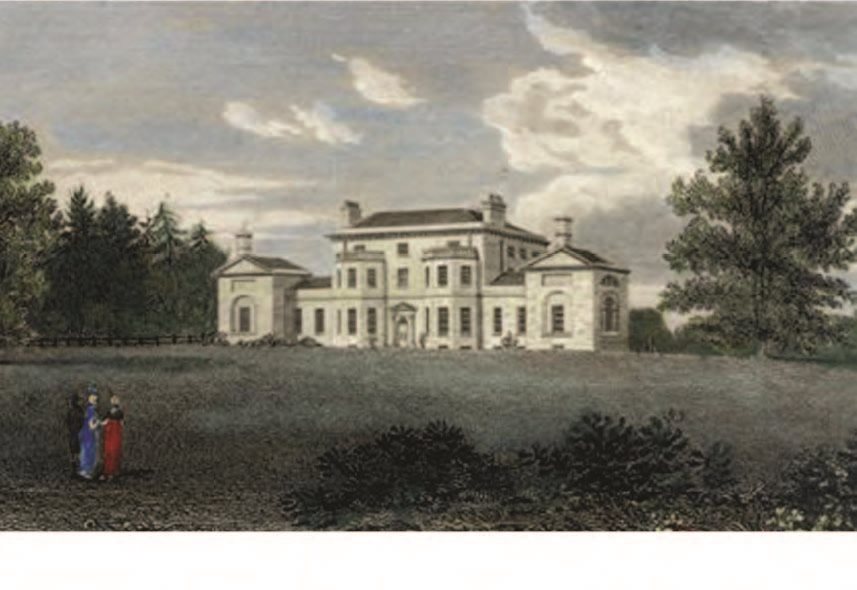A BRIEF HISTORY OF LONDON COLNEY CRICKET
Ian Holt, the club's local historian, believes that the game
we know today essentially sprang from two parallel sources; informal bat-and-ball
knockabouts within the rural community, often up to 50-a-side, and manifesting
local village rivalry, and more formal contests organised between the staff
of the great houses, usually intimately linked with gambling on the outcome.
Cricket in London Colney can certainly trace its formal origins back to Colney
House, a mansion built in 1783. By the end of the 18th century the mansion was
the property of the Earl of Kingston, who is known to have played cricket for
Hertfordshire. The first recorded match at Colney House dates to 1858, followed
three years later by the first recorded match of "London Colney Cricket Club"

From that date on, reports of matches are to be found regularly in the local
press, with the club being dominated by a number of local families, principally
Fusedale, Rowson, Desborough and Halsey.
In 1900 the club embraced competitive cricket
for the first time, as it entered the St Albans and District League,
and in 1908 won the cup

Although few photographs of the club have survived from the first half of the
20th century, match reports in the local press are plentiful, suggesting that
the club was thriving, having moved from Tyttenhanger Park to Playmouth field,
a site in the heart of London Colney village. Interestingly, one of the few
photographs to have survived that era records the London Colney ladies team,
which flourished in the 1930's.

Cricket was suspended in the 2nd world war, and London Colney was slow to revive.
Indeed, between 1950 and 1965 local players represented either (or both) of
two local works teams, St Albans Sand and Gravel, and A. R. Parson's, both playing
at another location in London Colney, the Charles Morris playing fields. Only
in 1965 did London Colney Cricket Club re-emerge from its hibernation. Scores
from that period, and the departure of a number of gifted cricketers, suggest
that the playing facilities were less than ideal. They became impossible at
the end of the decade when the then grounds-man somehow managed to destroy every
blade of grass on the square whilst attempting to fertilise it (his name was
Maurice Pratt - make of that what you will). For a few seasons local players
formed another club, the Caledon Cricket Club, but by 1971 they decided to return
to the Charles Morris Ground, and to again reinstate London Colney Cricket.
Matches were played on Sundays until 1973, when Saturdays were included.
By 1974 the club felt sufficiently strong to play in the County League of Cricket;
the Herts Cricket Competition group 2. This was a big step as it immediately
gave the club a very competitive Saturday fixture list.
By 1976 the club had a second XI in place, and, more importantly, volunteers
were beginning to care for the home wicket, to encourage a better bounce, higher
scores and more enjoyment. The Herts Cricket Competition was re-structured in
1985, with London Colney playing in Division 3. The League's criteria for a
club playing at this level required a club to be self-contained, with "club
room" as well as changing room and shower facilities. Discussions with the Parish
Council began, as most clubs by now had these full facilities. In 1986 the club
won Division 3 and moved into Division 2, which did result in problems with
the league rules as the club was the only one in Division 2 without the full
facilities. The problems temporarily abated in 1987 as the club returned to
Division 3, although most clubs in that division were also by then improving
their standards. The struggle to comply could not be ignored forever, and it
became the pressing duty of the committee to resolve the issue, particularly
when the club were again promoted as divisional champions in 1991.
Then, quite by chance, with the league future of the club in jeopardy, the
club learned that a ground at Shenley, (the next village) which was privately
owned and with the benefit of a club-room, had become vacant. Discussion were
pursued with the owner, and terms were agreed, and in 1994 the club decided
to remove from the village, with mixed emotions although sure of having made
the right decision.
As the century moved towards its close, the Green St (Shenley) ground again
changed hands, and when the new owners sought to dispose of their asset, London
Colney Cricket Club was once more faced with the prospect of being made homeless,
or to be more accurate, the stark prospect of "buying it or leaving it". With
a recorded tradition going back 150 years there was never a choice. Meetings
with the club members and solicitors ensued, and the membership of the club
determined to buy the ground. With a quite remarkable unity of purpose the necessary
cash was raised, and London Colney Cricket Club acquired its own ground, with
obligations to no man, in the early part of the year 2000.
The new millennium finds the club in an excellent
state. The 2000 season saw both the first and second XI's gain promotion from
their respective divisions, and we frequently buck wider trends by continuing
to put out 2 XI's on a Sunday. Looking back to 1980, we see a time of almost
un-interrupted progress, in facilities, playing standard and strength, and prospects.
In 2005 both the 1st XI and the 2nd XI achieved promotion to Hertfordshire League Divisions 3 and 7 respectively, though after further restructuring of the league, the sides will contest the 2014 season in Divisions 4 and 9. Whilst it remains the dream
to one day take the club back home to within the historical parish boundaries
of London Colney, we are for now in control of our own destiny.
For London Colney Cricket Club, if the past
is long and interesting, the future looks even better.